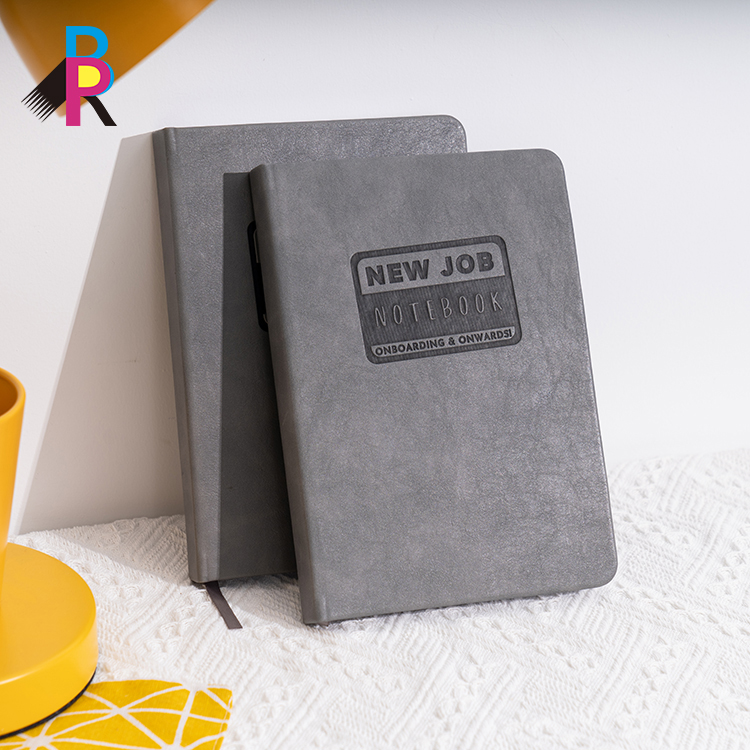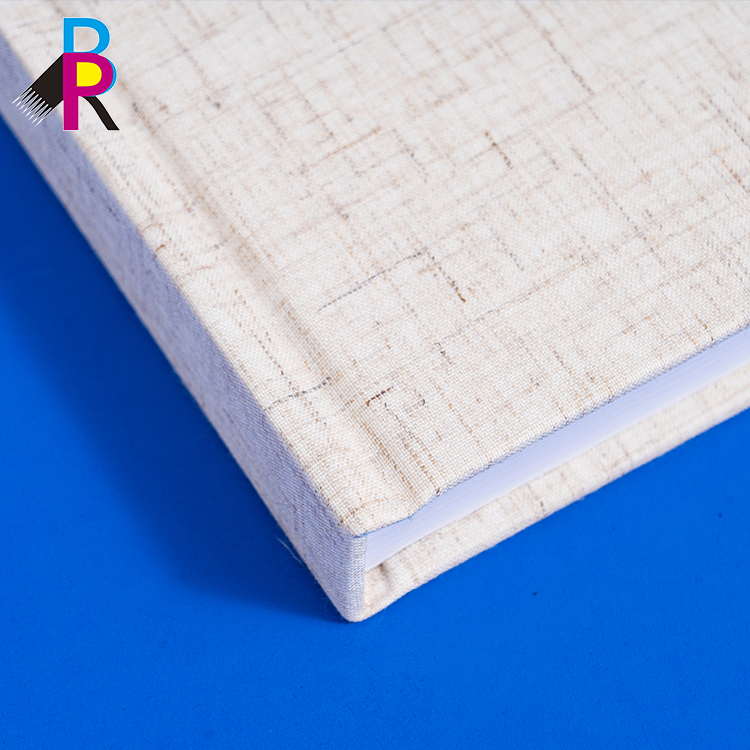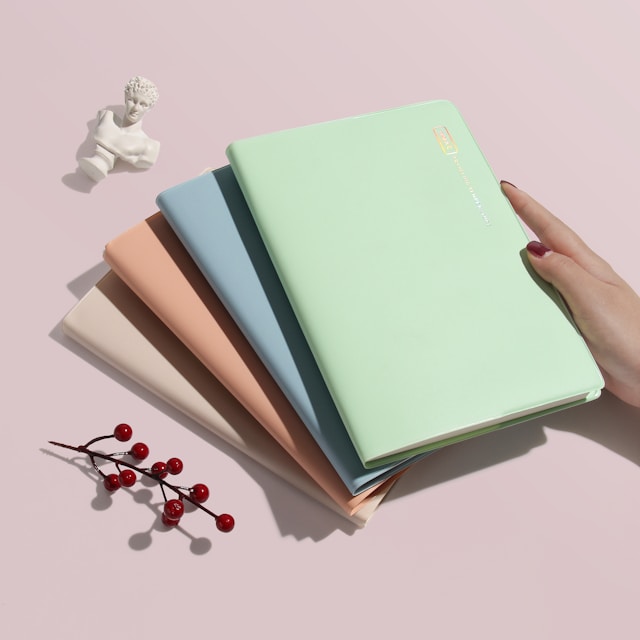Notebook covers play a crucial role in protecting the contents of the notebook, safeguarding it from spills, dirt, and physical damage.Additionally, notebook covers enhance the aesthetic appeal of the notebook, making it suitable for various settings, whether it be casual use, professional environments, or academic purposes. Covers can also offer extra features such as pockets for additional storage, pen holders for convenience, and closures to keep the notebook securely closed, adding to the overall functionality and practicality of the notebook.
By examining the unique features, advantages, and disadvantages of each type, this comparison aims to help readers make an informed decision based on their specific needs, preferences, and budget.
Leather Notebook Covers

Advantages
1. Longevity
One of the most significant advantages of leather notebook covers is their longevity. A well-crafted leather cover can last for many years, even decades, if properly maintained. This durability means that a leather cover can protect multiple notebooks over its lifetime, making it a cost-effective investment in the long run.
2. Classic and professional look
Leather covers exude a timeless, classic appeal that is often associated with professionalism and sophistication. They are commonly used in corporate settings, academic environments, and by professionals who want to convey a sense of style and reliability.
3. Aging and Patina
Unlike many materials that degrade with age, leather improves over time, developing a patina that adds to its character and beauty. This aging process enhances the unique qualities of the leather, giving it a distinct, personalized look. The patina can show signs of wear and use, such as slight discoloration or marks, which contribute to the cover’s vintage charm.
Disadvantages
1. Higher cost
Leather notebook covers are generally more expensive than those made from fabric or plastic. The high cost is due to the quality of the material, the craftsmanship involved in creating the cover, and the durability it offers. While the initial investment is higher, the long-term benefits can outweigh the cost for those who prioritize quality and longevity.
2. Requires maintenance
To maintain its appearance and durability, leather requires regular care and maintenance. This can include cleaning, conditioning, and protecting the leather from moisture and direct sunlight. Without proper maintenance, leather can dry out, crack, or become discolored. This upkeep can be time-consuming and may not be suitable for everyone.
3. Ethical concerns
Leather production raises ethical concerns related to animal welfare and environmental impact. These ethical considerations may influence the decision of individuals who are conscious of animal rights and sustainability issues.
Fabric Notebook Covers

Advantages
1. Wide range of designs
Fabric covers come in an extensive array of designs, making it easy to find one that matches personal style or specific needs. Whether it’s a minimalist design for a professional setting or a vibrant, artistic pattern for personal use, the options are virtually limitless.
2. Generally more affordable
Compared to leather and even some high-quality plastic covers, fabric notebook covers are generally more affordable. The lower cost of materials and simpler manufacturing processes contribute to their affordability. This makes fabric covers a budget-friendly option for those who want to protect and personalize their notebooks without spending a lot of money.
3. Lightweight and portable
Fabric covers are typically lightweight, adding minimal extra weight to the notebook. This portability is particularly advantageous for students, professionals, and anyone who needs to carry their notebook around frequently.
Disadvantages
1. Less durable
While fabric covers offer many benefits, they are generally less durable than leather or plastic covers. The material can wear down more quickly, especially with frequent use. Fabric is more susceptible to fraying, tearing, and general wear and tear, which can shorten the lifespan of the cover.
2. Prone to stains and wear
Fabric covers are more prone to staining and showing signs of wear compared to leather and plastic. Spills, dirt, and everyday handling can lead to stains that are difficult to remove. Additionally, fabric can show signs of wear, such as fading and pilling, over time. This can affect the cover’s appearance and reduce its overall aesthetic appeal.
3. Limited protection against water
One of the significant drawbacks of fabric covers is their limited protection against water. Fabric is generally not water-resistant, and exposure to moisture can lead to stains, warping, and damage to both the cover and the notebook itself.
Plastic Notebook Covers

Advantages
1. Affordable
Plastic notebook covers are generally very affordable, making them a cost-effective choice for many consumers. The low cost of production and materials contributes to their affordability, which is particularly appealing for students, budget-conscious consumers, and anyone needing to purchase covers in bulk.
2. Water-Resistant
A significant advantage of plastic covers is their water resistance. Unlike fabric covers, plastic covers can repel water, protecting the notebook from spills, rain, and other sources of moisture. This water-resistant quality makes plastic covers a practical choice for environments where exposure to liquids is likely, such as in the kitchen, outdoors, or in school settings.
3. Easy to Clean
Plastic covers are notably easy to clean and maintain. Most stains and dirt can be wiped off with a damp cloth, making them low-maintenance and convenient. This ease of cleaning helps keep the covers looking new and presentable for a longer period, adding to their practical appeal.
Disadvantages
1. Environmental concerns
One of the major drawbacks of plastic covers is their environmental impact. Plastic is a non-biodegradable material, and its production and disposal contribute to environmental pollution. Consumers who are environmentally conscious may prefer alternatives that have a lower environmental footprint.
2. Can feel less premium
Despite their practicality, plastic covers can feel less premium compared to leather or even high-quality fabric covers. The look and feel of plastic may not convey the same level of sophistication or professionalism, which can be a consideration for those using their notebooks in formal or professional settings.
3. Potential for cracking or brittleness over time
Over time, plastic covers can become brittle and may crack, especially if exposed to extreme temperatures or prolonged use. This potential for cracking or brittleness can affect the longevity and durability of the cover, requiring more frequent replacements compared to more durable materials like leather.
Selecting the right notebook cover ultimately depends on individual needs, preferences, and budget. Consider the environment in which the notebook will be used, the level of protection required, and the desired aesthetic. Whether you choose the elegance of leather, the creativity of fabric, or the practicality of plastic, each type of cover offers unique benefits and drawbacks. By weighing these factors, you can make an informed decision that best suits your personal or professional requirements, ensuring your notebook is both protected and reflective of your style.
Design your perfect notebook! Start customizing your printed notebook today.
resource:unsplash wikipedia



